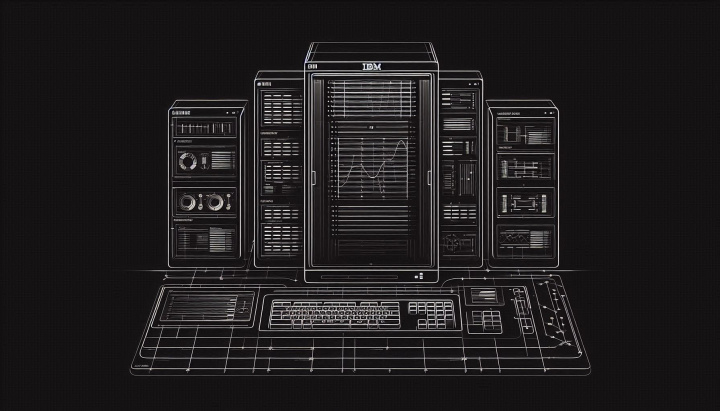Wi-Fi and Ethernet Network Speeds Explained
In the digital world, network speed is a fundamental factor that shapes our daily lives – whether it's online communication, gaming, video conferencing, or simple browsing. The evolution of wired (Ethernet) and wireless (Wi-Fi) networks has come a long way over the past decades. While speeds of a few megabits per second were considered fast in the 90s, today we encounter gigabit speeds even in our homes.

The performance of computer hardware standards is often advertised using theoretical maximum values measured under ideal laboratory conditions (in practice, transfer rates can be limited by device controllers, temperature, or other bottlenecks.). These figures don't necessarily reflect real-world usage speeds, but they are excellent for comparison purposes as they clearly show the differences between technological generations.
In the tables below, I provide the theoretical maximum value for each standard, rounded for readability and comparison, and always shown in bytes (specifically MB/s). I wrote about computer data transfer and storage standards, units of measurement, speeds, and their theoretical foundations here.
Wired Networks (Ethernet)
Wired networks represent the traditional and reliable form of data transmission, where devices communicate with each other through physical cables. These networks typically offer greater stability, lower latency, and higher data transfer speeds compared to wireless solutions, especially under heavy load.
History and Development
The first computer networks used wired connections, initially via coaxial cables, and then from the 1990s onwards, UTP (Unshielded Twisted Pair) cables became the industry standard. Ethernet technology, developed in the 1970s, remains one of the most widespread wired networking solutions today. It has continuously evolved from the initial 10 Mbit/s speeds to potentially 400 Gbit/s today.
Interesting Facts and Technical Details
- UTP, FTP, and STP Cables: The most common Ethernet cable is UTP (Unshielded Twisted Pair), which uses unscreened twisted pairs. FTP (Foiled Twisted Pair) and STP (Shielded Twisted Pair) cables use shielding, providing better protection against electromagnetic interference (EMI).
- Categories: Ethernet cables are available in different categories (e.g., Cat5e, Cat6, Cat6a, Cat7, Cat8), which provide increasing bandwidth and speed capabilities. For example, Cat6a can support speeds up to 10 Gbit/s, while Cat8 supports 40 Gbit/s over short distances.
- Fiber Optic Cables: For long-distance and high-speed data transmission, fiber optic cables are preferred as they are immune to electromagnetic interference and can transmit data over tens of kilometers without significant signal loss.
Advantages and Disadvantages
✅ Advantages:
- High speed and low latency
- Stable, interference-resistant connection
- Greater security, as it's harder to eavesdrop
❌ Disadvantages:
- Requires physical cabling, which can be more expensive and less flexible
- More complex installation and maintenance
- Limited mobility for devices
Ethernet Data Transfer Standards Table
| Technology | Typical Cable/Medium | Introduced | Bandwidth (bit/s) | Bandwidth (byte/s) |
|---|---|---|---|---|
| Ethernet (10BASE-T) | Cat 3 UTP | 1990 | 10 Mbit/s | 1.25 MB/s |
| Fast Ethernet (100BASE-TX) | Cat 5 UTP | 1995 | 100 Mbit/s | 12.5 MB/s |
| Gigabit Ethernet (1000BASE-T) | Cat 5e/Cat 6 UTP | 1999 | 1 Gbit/s | 125 MB/s |
| 10 Gigabit Ethernet (10GBASE-T) | Cat 6a/Cat 7 UTP | 2006 | 10 Gbit/s | 1,250 MB/s |
| 25 Gigabit Ethernet (25GBASE-T) | Cat 8 UTP | 2016 | 25 Gbit/s | 3,125 MB/s |
| 40 Gigabit Ethernet (40GBASE-T) | Cat 8 UTP | 2016 | 40 Gbit/s | 5,000 MB/s |
| 100 Gigabit Ethernet | Fiber Optic / DAC | ~2010s | 100 Gbit/s | 12,500 MB/s |
| 400 Gigabit Ethernet | Fiber Optic | ~2020s | 400 Gbit/s | 50,000 MB/s |
*Note: Higher speeds (100G, 400G and beyond) primarily utilize fiber optics for longer distances, though short-reach copper solutions like Direct Attach Cables (DACs) also exist.*
Wireless Networks (Wi-Fi)
Wireless networks (like Wi-Fi, Bluetooth, LTE, 5G) have become increasingly popular over the past decades, allowing devices to connect to the internet and each other without cables. Wi-Fi is one of the most common wireless technologies used in homes, offices, and public places.
History and Development
The first Wi-Fi standard, 802.11, appeared in 1997 and could only provide speeds up to 2 Mbit/s. In the 2000s, the Wi-Fi 802.11b/g/a standards became widespread, offering faster data transmission. The real breakthrough came with Wi-Fi 4 (802.11n) and Wi-Fi 5 (802.11ac), which provided higher speeds, more stable connections, and better range. Today, Wi-Fi 6/6E and Wi-Fi 7 are taking wireless networking to new levels with lower latency and greater capacity.
Interesting Facts and Technical Details
- Frequency Bands: Wi-Fi mainly operates on the 2.4 GHz, 5 GHz, and, with newer Wi-Fi 6E/7, the 6 GHz bands. The 2.4 GHz band offers longer range but is more crowded and slower, while the 5 GHz and 6 GHz bands provide higher speeds and less congested channels.
- MIMO and MU-MIMO: Modern Wi-Fi standards support Multiple Input Multiple Output (MIMO) and Multi-User MIMO (MU-MIMO) technologies, enabling multiple devices to connect simultaneously at high speeds.
- OFDMA and Beamforming: Wi-Fi 6 and newer versions introduced Orthogonal Frequency-Division Multiple Access (OFDMA) for more efficient channel sharing among multiple devices, and Beamforming, which directs the signal towards the connected device, improving connection stability.
Advantages and Disadvantages
✅ Advantages:
- Easy to use without cables
- Flexibility and mobility (any Wi-Fi enabled device can connect)
- Simple installation and expandability
❌ Hátrányok:
- Generally lower speeds and higher latency compared to wired solutions
- Susceptible to interference (from other Wi-Fi networks, Bluetooth, microwaves, etc.)
- Potential security risks (requiring strong encryption like WPA3 for protection)
The evolution of Wi-Fi continuously improves performance, but in certain situations – such as high-load enterprise environments or data centers – wired networks are still essential for ensuring stability and maximum speed.
Wi-Fi Data Transfer Standards Table
| Generation | Standard | Frequency Band(s) | Introduced | Max Data Rate (bit/s) | Max Data Rate (byte/s) |
|---|---|---|---|---|---|
| Wi-Fi 1 | 802.11 | 2.4 GHz | 1997 | 2 Mbit/s | 0.25 MB/s |
| Wi-Fi 2 | 802.11b | 2.4 GHz | 1999 | 11 Mbit/s | 1.375 MB/s |
| Wi-Fi 3 | 802.11a/g | 5 GHz / 2.4 GHz | 1999 / 2003 | 54 Mbit/s | 6.75 MB/s |
| Wi-Fi 4 | 802.11n | 2.4 GHz / 5 GHz | 2009 | 600 Mbit/s | 75 MB/s |
| Wi-Fi 5 | 802.11ac | 5 GHz | 2013 | ~3.5 - 6.9 Gbit/s | ~433 - 866 MB/s |
| Wi-Fi 6 | 802.11ax | 2.4 GHz / 5 GHz | 2019 | ~9.6 Gbit/s | ~1,200 MB/s |
| Wi-Fi 6E | 802.11ax | 2.4 / 5 / 6 GHz | 2020 | ~9.6 Gbit/s | ~1,200 MB/s |
| Wi-Fi 7 | 802.11be | 2.4 / 5 / 6 GHz | 2024 | ~46 Gbit/s | ~5,750 MB/s |
*Note: Wi-Fi speeds are theoretical maximums under ideal conditions, often requiring multiple antennas (streams) and wide channels. Real-world speeds are typically lower.





